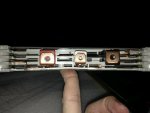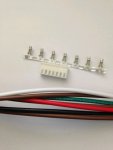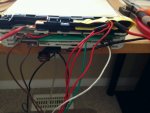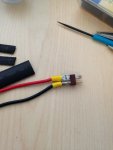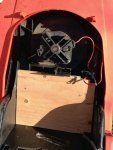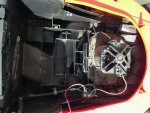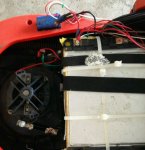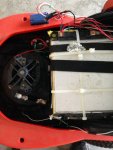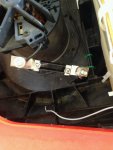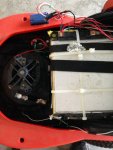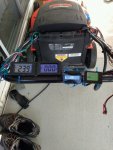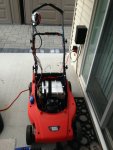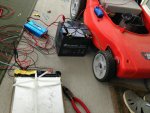After 5 years of using the CMM 100 with its lead acid 24 volt 18Ah battery, I decided that it was time for an upgrade. After months of searching I decided on the Lithium ion (LiMn2O4/LiNiO2) used to power the electric car the Nissan Leaf. I considered both the NiCd and NiMh battery types, but could not find high enough capacity cells for a reasonable cost. It is not possible to charge either of those battery chemistries properly and safely in parallel, so building a pack out of multiple parallel cells wasn't an option either. One could build a parallel battery pack, and disassemble it to charge it one at a time, but that is not an option. The way the CMM1200 is designed.
So lithium ion it is. I am very familiar with the lithium batteries and their safety issues. Lithium ion batteries are very dangerous and you must be careful as fire and explosion are very real possibilities. I write this as both a warning to any who wish to do the same as I did and also to let people know that I understand the danger (if I don't write this I inevitably get angry replies about the danger I am putting myself in working with these batteries).
From the pictures you can see that the cells are about the size of a piece of paper, although a little thicker. You can see three posts that look like screw holes. These are the positive, negative, and monitor terminals of the battery and are not labeled in any way, so you must use a multimeter to figure it out. Then carefully pry the cells apart and then use a Dremel to cut the copper leads that are still connected, but not needed. You must be VERY careful not to touch both terminals at the same time with a piece of metal or pair of pliers etc., or sparks will fly! Once you have figured out the positive and negative poles, and have pried apart the cells that are in parallel, then solder them all back together in series, positive to negative, negative to positive etc., until you have the 6 cells together for a total of 25.2 volts fully charged.
Continued in the next post...
So lithium ion it is. I am very familiar with the lithium batteries and their safety issues. Lithium ion batteries are very dangerous and you must be careful as fire and explosion are very real possibilities. I write this as both a warning to any who wish to do the same as I did and also to let people know that I understand the danger (if I don't write this I inevitably get angry replies about the danger I am putting myself in working with these batteries).
From the pictures you can see that the cells are about the size of a piece of paper, although a little thicker. You can see three posts that look like screw holes. These are the positive, negative, and monitor terminals of the battery and are not labeled in any way, so you must use a multimeter to figure it out. Then carefully pry the cells apart and then use a Dremel to cut the copper leads that are still connected, but not needed. You must be VERY careful not to touch both terminals at the same time with a piece of metal or pair of pliers etc., or sparks will fly! Once you have figured out the positive and negative poles, and have pried apart the cells that are in parallel, then solder them all back together in series, positive to negative, negative to positive etc., until you have the 6 cells together for a total of 25.2 volts fully charged.
Continued in the next post...

Attachments
Last edited:

